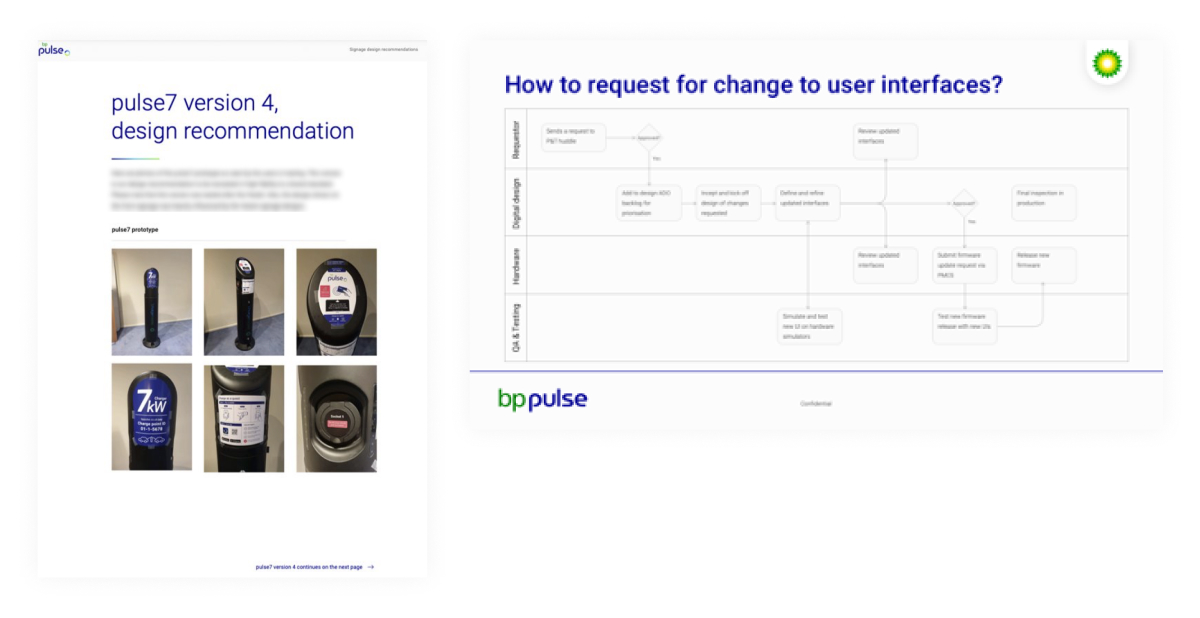Laying the foundations
Charger interactions
We analysed various inputs from User Research, EV Safaris, and Mystery Motorist initiatives, providing us with a list of initiatives to enhance the user experience.
I set out initial activities focused on defining the core elements of the user experience:
I led workshops and playbacks to agree on the definition of the charging stations and their statuses from an end-user perspective, with more than 60 stakeholders.

Together with a Product Manager, I supervised a squad to solve first-time charge issues on the most problematic chargers, after which we published design recommendations backed by user testing.
My team agreed with the system engineering team on the processes to push design changes (similarly to app publishing process).

This enabled my team to align with all stakeholders in readiness to implement the necessary changes effectively.

